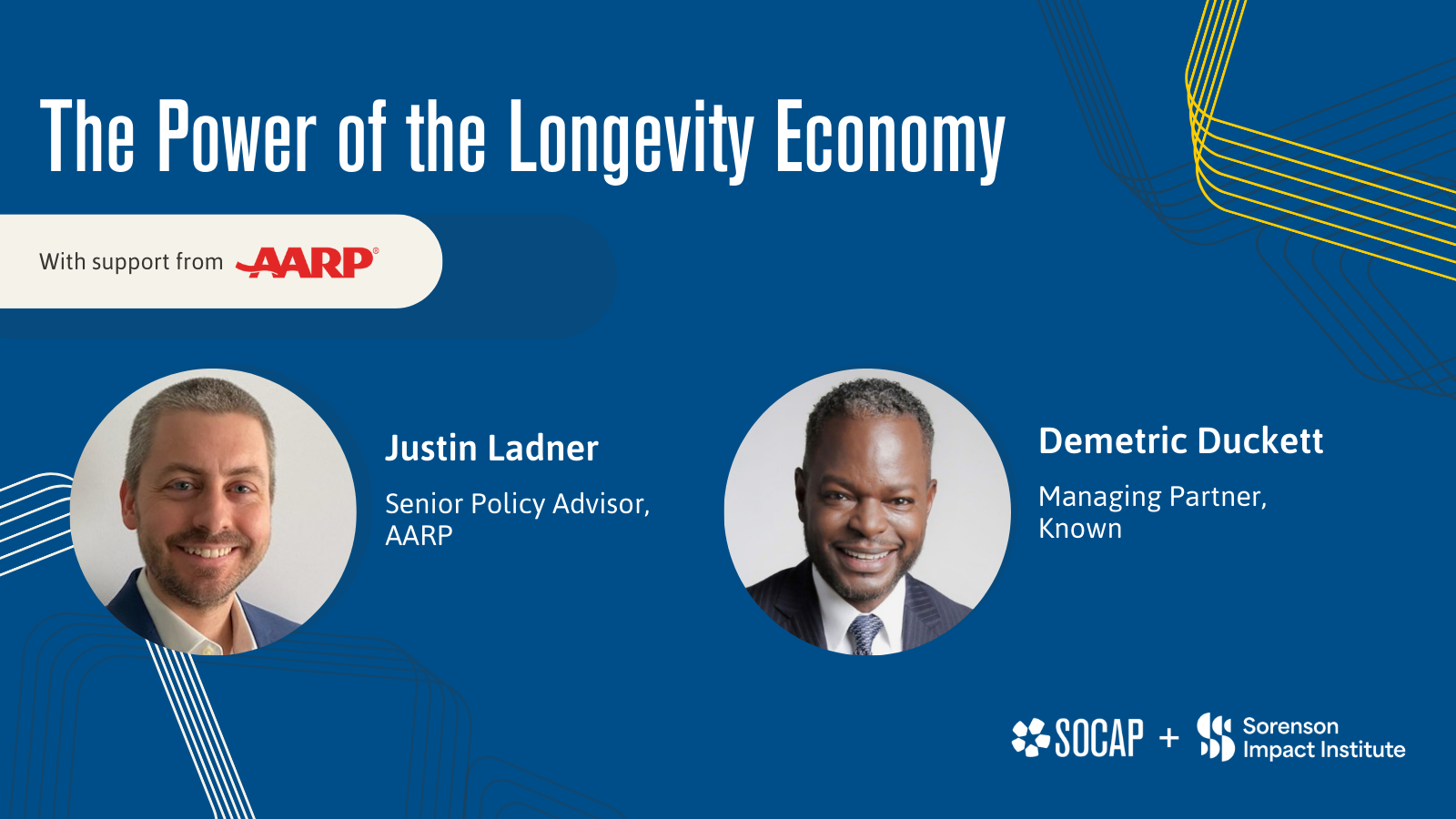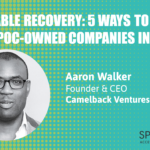Insights from AARP’s Global Longevity Economy Outlook
People 50 and older play an essential and growing role in driving global economic activity and business growth as consumers and workers. In 2020, they accounted for half of consumer spending, and that fraction is projected to proliferate in the coming years.
AARP recently released a report called the Global Longevity Economy Outlook to examine these trends and the opportunities they represent. It looks at the 50-plus population’s consumer spending and impact on the GDP, employment, and labor income through 2050.
SOCAP partnered with AARP to host a webinar examining what the Longevity Economy may mean for entrepreneurs, innovators, and other business leaders. The webinar featured Justin Ladner, Senior Policy Advisor at AARP, in a Q&A session with Demetric Duckett, Managing Partner at Known, a new majority financial growth firm. Duckett is a thought leader in the domestic impact investing field with extensive experience in diversity, equity and inclusion, and community development.
During the virtual conversation, Ladner said the 50-plus population is already a critical consumer group that accounts for a majority of global spending — and its economic power is rapidly rising. “Older consumers represent a huge share of spending,” he said. “We project that to rise significantly over the next 30 years, to almost 60% in 2050.” (These figures come from AAPR’s Global Longevity Economy® Outlook report. Read the full report to explore the data.)
The AARP data shows Longevity Economy spending is strong across various categories, including health, housing, recreation, and transportation. “We already have the production of goods and services relying very much on older consumers, and that reliance is going to grow rapidly over time,” Ladner said. “If you’re thinking about developing a product or service, thinking about older consumers is a necessary component to your success.”
Ladner also emphasized that the economic contributions of older adults extend far beyond spending. For example, a recent article from AARP and NationSwell examines the rapidly growing representation of people aged 55-plus in America’s workforce. In 1992, fewer than one in nine (10.7%) of full-time workers in the United States were age 55 or over; just 30 years later, that fraction was nearly one in four (22.5%). This dramatic shift underscores a pressing need to develop labor policies and employment practices that work for every generation.
According to Ladner, age diversity has also been shown to drive productivity in the workplace as employers prefer to work with people of varied ages. “Younger workers appreciate older workers for their experience and the mentorship that that provides,” Ladner said. “Older workers really appreciate working with younger workers for a reverse mentoring sort of experience because they gain, for example, technical knowledge in new fields.” (A 2019 AARP report covers these findings in greater detail.)
In addition to age-diverse workplaces, Duckett said shifting demographics mean the ethnic and racial makeup of the United States will be different in 2050. “We’ll have a population that is more than 50% people of color,” he said. Duckett and others at Known are tapping into the potential of growing racial diversity through Living Cities funds, which aim to address underinvestment in communities of color.
Duckett also noted that older workers may have varied reasons for staying in the workforce — some may want to work while others need to for financial reasons. These workers may face hiring challenges due to age discrimination, he said. Employers can look to the AARP report and workforce trends as proof that older people want to stay in the workplace and contribute to companies that realize and tap into their strengths.
Watch the full conversation:







